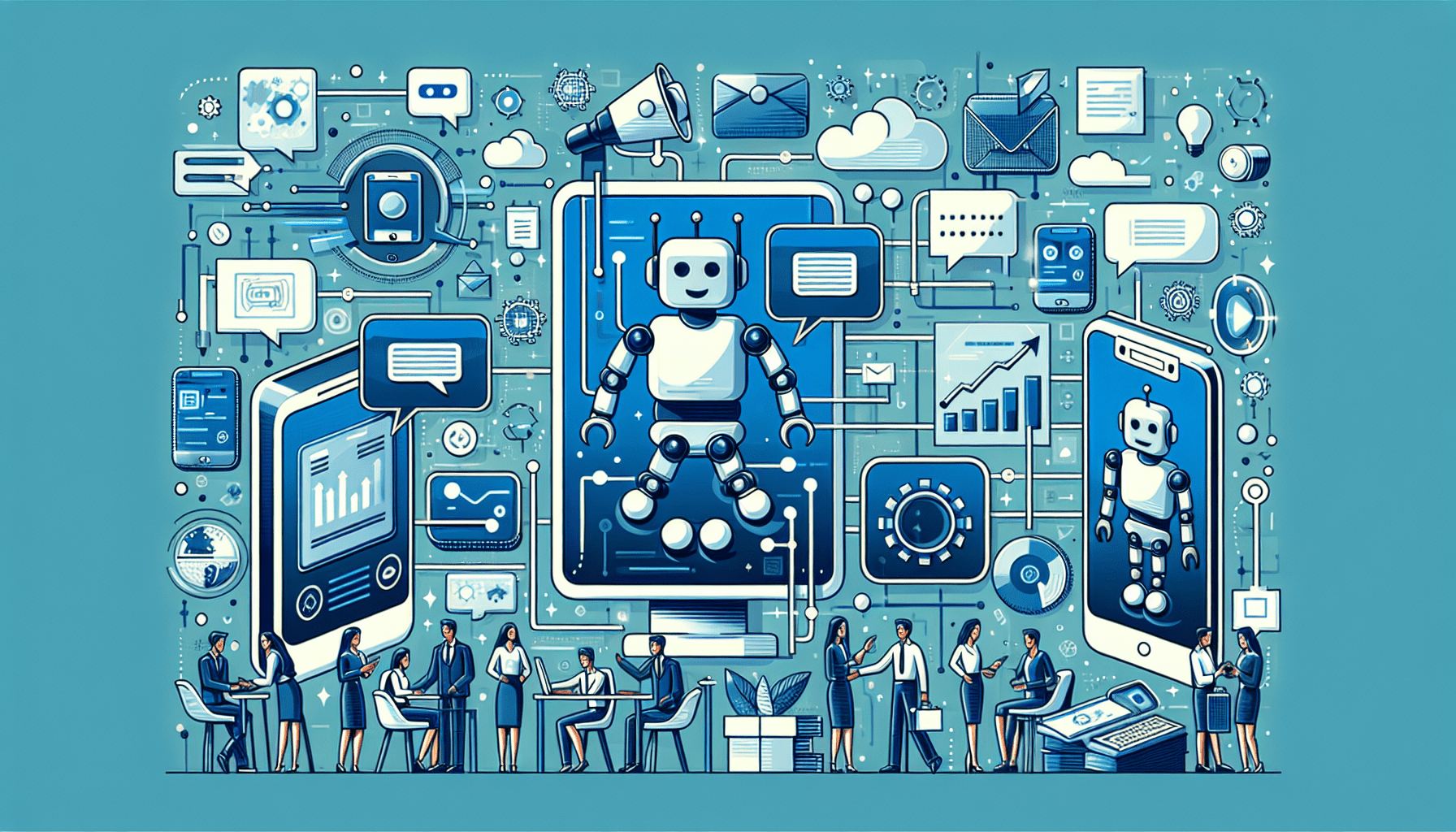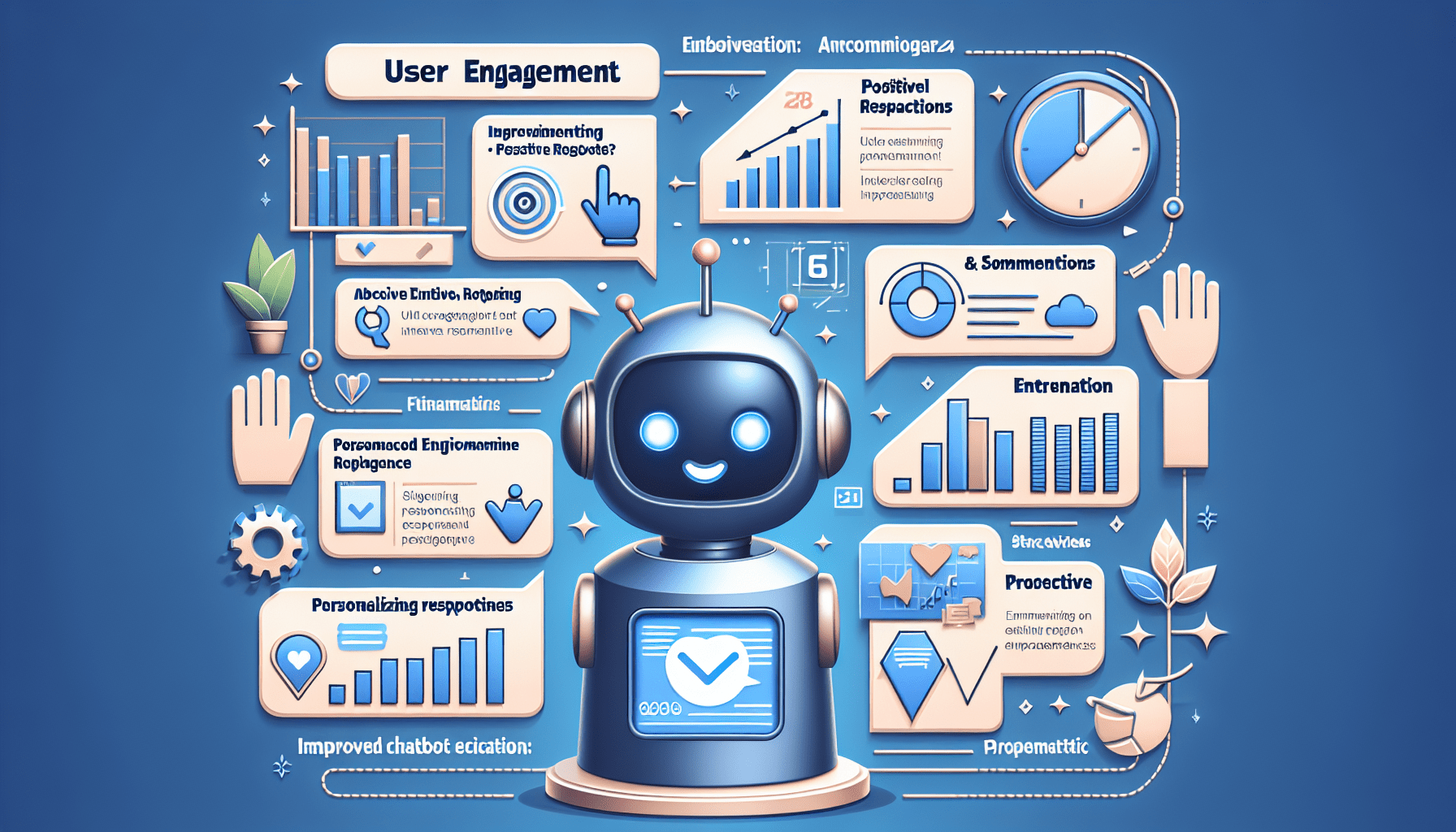In the fascinating world of technology, chatbots have emerged as intelligent virtual assistants that can simulate human conversations. With advanced chatbot development, these virtual assistants have become even more powerful, offering personalized experiences and efficient problem-solving abilities. This article explores the cutting-edge advancements in chatbot development and how they are revolutionizing industries such as customer service, healthcare, and e-commerce. Discover the incredible potential of advanced chatbot development and how it is shaping the future of human-computer interactions.
Natural Language Processing (NLP)
Understanding user input
In order to create an effective chatbot, it is crucial to understand and interpret user input accurately. Natural Language Processing (NLP) plays a vital role in achieving this. NLP allows the chatbot to analyze and comprehend the user’s intent, extracting meaning from their messages. By employing techniques such as language processing and machine learning algorithms, NLP enables the chatbot to recognize patterns in user input, helping it to provide relevant and contextual responses.
Language identification
One of the challenges in chatbot development is understanding the language in which the user is communicating. Language identification, a part of NLP, helps the chatbot determine the language being used. This allows the chatbot to offer appropriate responses and ensure a seamless conversation experience, regardless of the user’s language.
Sentiment analysis
Sentiment analysis is a crucial aspect of chatbot development. By utilizing NLP techniques, the chatbot can understand and interpret the sentiment behind a user’s message. This enables the chatbot to respond in a way that aligns with the user’s emotions, offering empathy or support when necessary. Sentiment analysis also helps in analyzing user feedback, allowing the chatbot to constantly improve and enhance its interactions.
Machine Learning for Chatbots
Training data
In order to create a chatbot that can understand and respond to user input effectively, it requires a vast amount of training data. This data is used to train the chatbot’s machine learning algorithms, allowing it to learn patterns and generate accurate responses. The training data typically consists of pre-processed conversations, covering a wide range of topics and scenarios, enabling the chatbot to handle different user queries.
Supervised learning
Supervised learning is an essential technique used in chatbot development. It involves training the chatbot with labeled data, where each input is associated with a corresponding output. The chatbot learns from this labeled data and uses it to make predictions or generate responses based on new user input. Through this process, the chatbot can continually improve its performance and accuracy.
Unsupervised learning
Unsupervised learning is another machine learning technique used for chatbot development. Unlike supervised learning, unsupervised learning does not rely on labeled data. Instead, it allows the chatbot to extract patterns and insights from unstructured data. Unsupervised learning enables the chatbot to identify common themes or topics in user conversations, aiding in context understanding and generating appropriate responses.
Contextual Understanding
Dialog context
Understanding the context of a conversation is essential for a chatbot to provide relevant and coherent responses. Dialog context refers to the information from previous interactions that is retained and used to comprehend subsequent user input. By maintaining dialog context, the chatbot can understand references to previous messages and keep track of the conversation flow, creating a more natural and seamless user experience.
State management
State management involves keeping track of the various variables and data associated with a conversation. This includes user preferences, system variables, and any other relevant information. Effective state management allows the chatbot to maintain an accurate understanding of the conversation and helps in generating appropriate responses based on the current state of the dialogue.
Contextual responses
Contextual responses are generated by the chatbot based on the current conversation context. By leveraging NLP techniques and machine learning algorithms, the chatbot can generate responses that are tailored to the specific query and context of the user. Contextual responses enhance the user experience by providing accurate and relevant information, improving overall user satisfaction.
Integration with External Systems
API integration
Integrating a chatbot with external systems through APIs enables it to access a wide range of functionalities and services. By connecting with APIs, the chatbot can fetch data from external sources, perform actions on behalf of the user, and provide real-time information. API integration enhances the capabilities of the chatbot, allowing it to handle tasks beyond its built-in capabilities.
Database connectivity
To provide personalized and relevant responses, chatbots often require access to a database. By connecting to a database, the chatbot can retrieve and store user information, preferences, and other relevant data. Database connectivity enables the chatbot to remember user preferences, history, and other contextual information, creating a more personalized and efficient conversation experience.
Third-party services integration
Incorporating third-party services into a chatbot expands its functionality and enhances user experience. Integrating services such as weather updates, news feeds, or e-commerce platforms allows the chatbot to provide real-time information and perform actions on behalf of the user. Third-party services integration adds value to the chatbot’s capabilities and makes it a useful tool for various tasks and interactions.
Multi-platform Support
Web-based chatbots
Web-based chatbots are designed to be accessed and interacted with through a web browser. They can be embedded within websites, making them readily available to users. Web-based chatbots offer the convenience of accessing information or services without leaving the web page, providing a seamless user experience.
Mobile chat apps
Mobile chat apps have become increasingly popular, and integrating chatbots within them offers a convenient way for users to access information or engage in virtual conversations. Mobile chat apps provide an easily accessible platform for users to interact with chatbots anytime and anywhere using their smartphones. This multi-platform support ensures that chatbots are available across different devices, catering to various user preferences.
Voice-activated chatbots
Advancements in voice recognition technology have led to the rise of voice-activated chatbots. These chatbots can be used with voice assistants like Amazon Alexa, Google Assistant, or Apple’s Siri. Voice-activated chatbots enable users to interact with the chatbot using voice commands, offering a hands-free and intuitive way of communication. This form of chatbot support enhances accessibility and user experience, particularly in scenarios where typing may not be practical or possible.
Chatbot Analytics
User engagement tracking
Analyzing user engagement is crucial for chatbot developers to understand how effectively their chatbot is being used. User engagement tracking involves monitoring various metrics, such as the number of interactions, user retention rates, and average conversation length. By tracking user engagement, developers can identify areas for improvement and optimize the chatbot’s performance to provide a better user experience.
Conversation flow analysis
Analyzing the flow of conversations between users and chatbots provides insights into the effectiveness of the chatbot’s responses and its ability to maintain coherent conversations. Conversation flow analysis helps developers identify any bottlenecks or areas where the chatbot may struggle, allowing them to make improvements and enhance the chatbot’s conversational capabilities.
Performance metrics
Evaluating the performance of a chatbot involves measuring its accuracy, response time, and overall effectiveness. Performance metrics assess the chatbot’s ability to understand user input, generate appropriate responses, and handle various user scenarios. By monitoring performance metrics, developers can identify any issues or areas that need improvement, ensuring that the chatbot consistently delivers a high-quality user experience.
Security and Privacy
User data protection
Protecting user data is of utmost importance in chatbot development. Chatbots may collect and store user information during conversations, so ensuring the security and privacy of this data is crucial. Implementing encryption protocols, access controls, and following data protection regulations helps safeguard user data from unauthorized access or misuse, instilling user trust and confidence in the chatbot.
Authentication and authorization
Authentication and authorization mechanisms ensure that only authorized individuals have access to the chatbot and its associated features. By implementing authentication protocols, developers can verify the identity of users before providing access to sensitive information or performing specific actions. Authorization mechanisms control the level of access granted to different users, allowing for personalized and secure interactions.
Secure communication channels
Chatbots often involve exchanging sensitive information between the user and the chatbot. Implementing secure communication channels, such as encrypted connections, protects the confidentiality and integrity of the data transmitted during conversations. Secure communication channels ensure that user interactions with the chatbot remain private and protected from any potential external threats.
Personalization and Customization
User profiling
Personalizing the chatbot’s interactions with users involves creating user profiles based on individual preferences, history, or demographics. User profiling allows the chatbot to tailor its responses and recommendations according to the user’s specific needs and interests. By analyzing user data and behavior, the chatbot can provide more relevant and engaging conversations, enhancing the overall user experience.
Recommendation systems
Integrating recommendation systems into chatbots allows them to suggest relevant products, services, or content based on user preferences and past interactions. Recommendation systems use machine learning algorithms to analyze user data, identify patterns, and provide personalized recommendations. By leveraging recommendation systems, chatbots can offer valuable suggestions, improving user satisfaction and engagement.
Adaptive learning
Adaptive learning enables chatbots to continually learn and improve based on user interactions and feedback. By analyzing user conversations and identifying patterns, the chatbot can adapt its responses and behavior over time, ensuring that it becomes more accurate and efficient. Adaptive learning empowers chatbots to evolve and provide personalized experiences, making them more effective and valuable to users.
Emotional Intelligence
Emotion detection
Emotional intelligence in chatbots involves the ability to detect and understand the emotions expressed by users during conversations. By employing sentiment analysis and emotion detection techniques, chatbots can recognize emotions such as happiness, sadness, or frustration. Emotion detection enhances the chatbot’s understanding of user input, enabling it to respond with empathy and tailored support.
Emotion-based responses
Emotion-based responses allow chatbots to generate appropriate reactions and replies based on the detected emotions of the user. By adapting its responses to match the user’s emotions, the chatbot can provide a more empathetic and supportive interaction. Emotion-based responses contribute to a more human-like conversation experience, making the chatbot feel more relatable and understanding to users.
Empathy and rapport building
Building empathy and rapport with users is a key aspect of chatbot development. By recognizing and responding to user emotions and needs appropriately, chatbots can establish a connection and create a more meaningful conversation. Empathy and rapport building contribute to user satisfaction and help foster a positive user experience, ensuring that users feel understood and supported throughout their interactions.
Voice Recognition and Synthesis
Speech-to-text conversion
Voice recognition technology allows chatbots to convert user speech into text, enabling them to process and analyze spoken input. By utilizing speech-to-text conversion, chatbots can understand and respond to spoken queries, providing a seamless and convenient user experience. This technology is particularly valuable in scenarios where typing may be challenging or inconvenient.
Text-to-speech synthesis
Text-to-speech synthesis enables chatbots to convert text into audible speech. By employing this technology, chatbots can deliver responses to users in a natural and human-like voice. Text-to-speech synthesis enhances user experience, especially in situations where reading text responses may not be feasible or desirable.
Voice-based interactions
Incorporating voice-based interactions into chatbots enables users to engage with the chatbot using spoken commands and responses. By integrating voice recognition and speech synthesis technologies, chatbots can facilitate hands-free and intuitive interactions, providing a more user-friendly experience. Voice-based interactions enhance accessibility and convenience, making chatbots more accessible to a wider range of users.
In conclusion, advanced chatbot development involves a wide range of techniques and technologies. By incorporating natural language processing, machine learning, contextual understanding, integration with external systems, multi-platform support, analytics, security and privacy measures, personalization and customization features, emotional intelligence, and voice recognition and synthesis capabilities, chatbots can provide highly interactive and valuable conversations. These advancements in chatbot technology aim to deliver personalized and seamless user experiences, ultimately enhancing user satisfaction and engagement.



